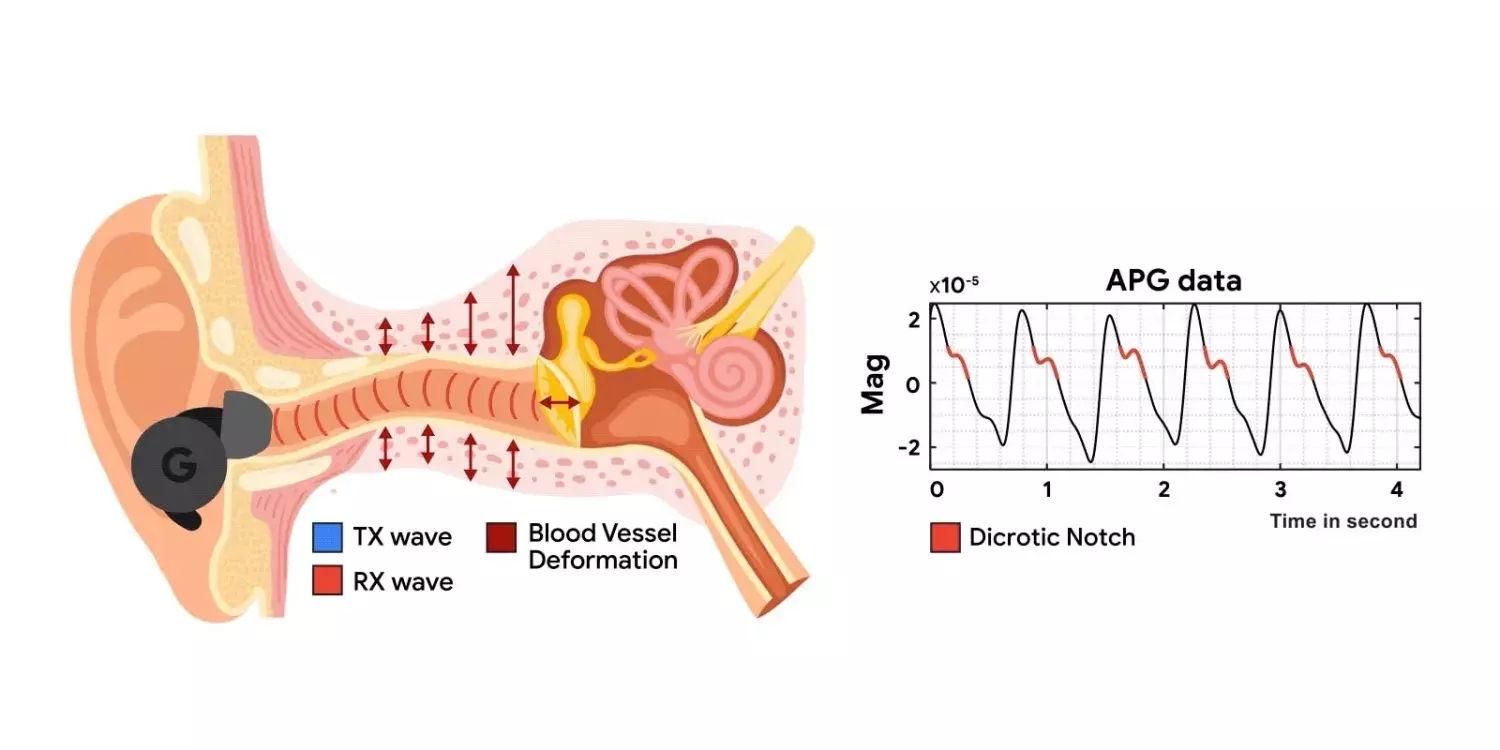
Google has published research into a technique that can measure the heart rate of users using only existing, wireless ANC wearables. The technique, called audioplethysmography, uses ultrasound waves to detect the heartbeat.
Audioplethysmography involves sending a low-intensity ultrasound signal through the speakers of the ANC earphones or headphones, explains Google. That signal emits echoes, which are picked up via the wearable’s microphone.
According to the researchers, this allows the subtle movement of the skin surface in the ear canal, as a result of blood being pumped through it, to be monitored. This information can then be processed into a heart rate measurement and a measurement of heart rate variability using a model that the researchers have created. The researchers state that existing wearables with a heart rate monitor function use ‘an abundance of sensors ‘, including photoplethysmograms and electrocardiograms, which must be processed with a microcontroller in the earphones or headphones.
According to Google, this means, among other things, that the wearable becomes more expensive and heavier, and that the battery runs out faster. That’s why the company tried to come up with a way to measure heart rate with existing wireless earphones with active noise cancellation, without changing anything in the hardware.
According to Google, unlike the aforementioned sensors, audio plethysmography works. equally well with different ear canal sizes, dark skin colors and background music. Even if the earphones are not completely snug in the ear, the technology is said to work ‘resiliently’. Audioplethysmography does show problems with exercise, although the researchers say they managed to solve that problem by using multiple frequencies and choosing the most accurate one.
Google claims in the conclusion of its study that there are With this technique an accurate heart rate and heart rate variability was measured ‘consistently’. The researchers write that this proves that audioplethysmography can transform any TWS-ANC wearable into a heart rate monitor ‘with a simple software upgrade’. According to Google, this technology opens up new possibilities for cheap health measurements.










